12 Incredible French Castles & Chateaux You Must Visit
Culture Travel may earn a commission through links on this website. As an Amazon Associate, we earn from qualifying purchases.
A visit to France isn’t complete without a tour of an extravagant French castle, known as a chateau. France has quite a few to offer. Gothic, Renaissance, and Medieval-style castles are all at a traveler’s fingertips. With tours about art, history, and gardens to wander, the French castle scene is one not to miss!
First things first. What’s the difference between a chateau and a castle? Even though the words are used interchangeably in English, there is a difference. In France, a chateau is considered private property, a manor, or a country house. A castle was used for more widespread purposes such as military defense or religious service.
In any case, many chateaux and castles are now open to the public to tour the lovely interiors and walk the grounds. Visiting a castle or chateau during a summer trip to France can give you an inside look at French history in one form or another!
French Châteaux
Here are the top French châteaux you must visit when in France! Many of these can be visited during a day trip from Paris.
Château de Chenonceau
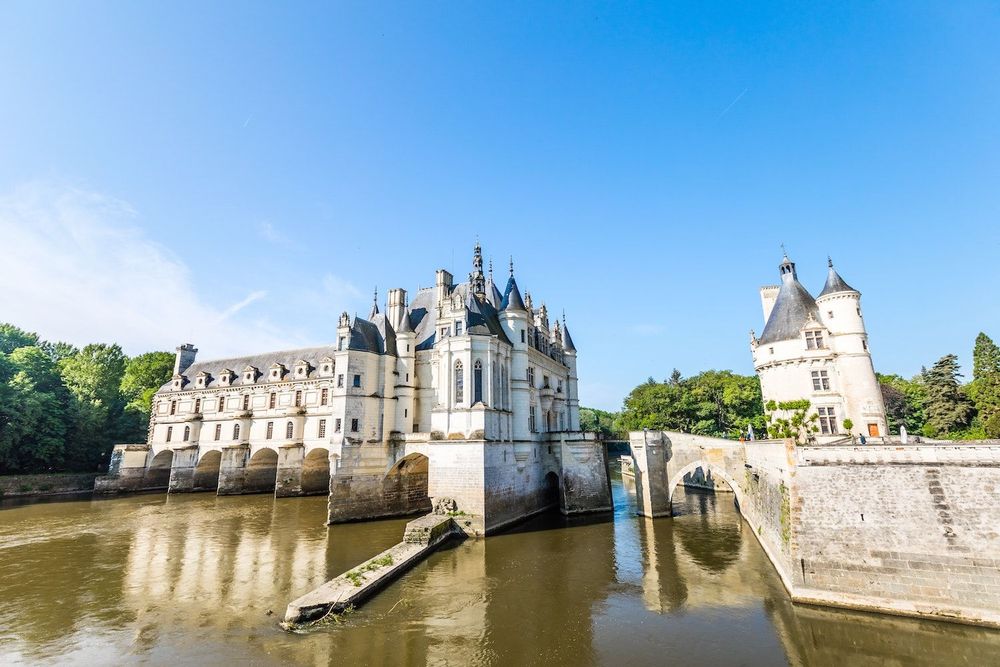
Located in the Loire Valley, the Château de Chenonceau is one of the most visited and photographed castles in France. In addition, the castle often referred to as the ‘ladies’ castle’ offers a unique perspective of women in French history.
The original building of the castle was commissioned by Thomas Bohier in 1512, however, the design was overseen and directed by his wife, Katherine Briconnet. With an original keep leftover from Medieval times, the castle primarily had a Renaissance style and interior under Katherine’s command. The castle ended up in royal hands when the monarchy demanded payment for debts.
While in royal possession, Henri II gifted the castle to his mistress, Diane de Poitiers. She added the iconic bridges that are one of the most beloved architectural aspects of the castle. However, peace was not to be hers in the estate. After Henri II died, his wife, Catherine de Medici forced Diane out of the castle and added her own touch.
She designed and built the gallery and ballroom that sit atop Diane’s bridge. The work, design, and additions of these three women, even when fueled by jealousy, have made Château de Chenonceau the architectural marvel it is today.
Visitors today can walk through the castle’s furnished rooms and imagine how its past occupants lived. The castle features exhibits about its history and the history of its owners. A cafe sits in Catherine de Medici’s gardens to provide coffee and treats to guests.
Château de Chantilly
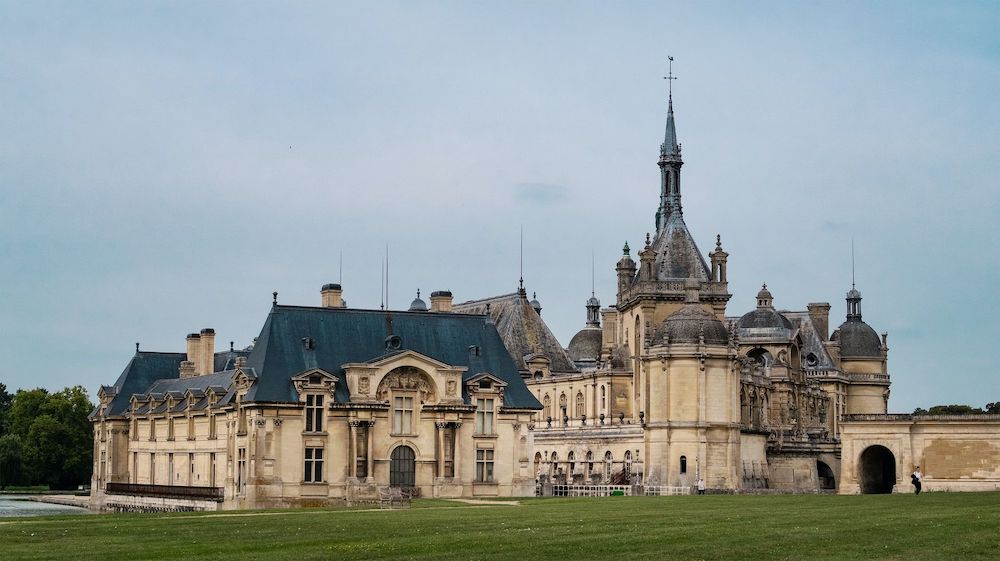
With gardens and art, Château de Chantilly is as much of an attraction to visitors today as it was to its designer, Henri d’Orleans, the Duke of Aumale, and son of King Louise-Phillip. Built in the 17th century, the palace was designed to show off. Here, the Duke displayed his collections of art and cultural artifacts. After being gifted to the Institut de France in 1866, the collection has grown so large it rivals the Louvre.
Visitors to Château de Chantilly can explore both gardens and the palace’s royal interiors. Ceremonial reception rooms, art galleries, private suites, and France’s most extensive library are all open to the public. In these rooms, visitors can connect with France’s greatest bibliophile and collector of his time.
The gardens offer rustic gardens, hamlets, and other treasures throughout. One of the garden favorites is the Temple of Venus, a French shrine to a Greek goddess. Streams and flowers cover the 115 hectares of garden space on the palace grounds. Tickets can be purchased on-site.
Château de Versailles
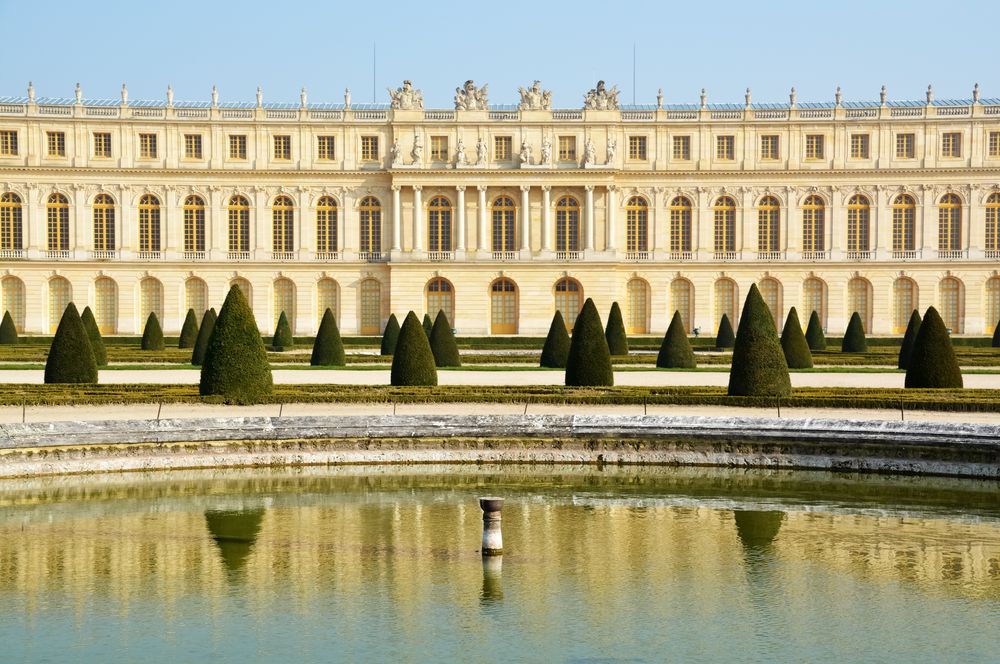
One of France’s, and Paris’, most visited sights is the beautiful Château de Versailles. Built in 1661, the palace was once home to King Louis XVI and his famous queen, Marie Antoinette. This is one of the most famous and well-known of the French castles and chateaux.
This castle gives visitors the opportunity to explore and experience the lavish lifestyles of the French aristocracy. Spread across 2,300 rooms, visitors can roam the royal suites (with a tour guide, of course!) and take in all of the beautiful architecture and interiors. Many tourists visit Château de Versailles just for the Hall of Mirrors, one of the palace’s most luxuriously designed rooms.
The interior isn’t the only attraction at Château de Versailles, The Grand Perspective, a promenade through the palace’s gardens, has been maintained and replanted every 100 years. This site is one of the most famous in Château de Versailles’ gardens and was designed in the 1600s by a team of architects and artists.
The palace became a museum after the French Revolution. As the Museum of the History of France, the palace began to house art collections and other artifacts from the revolution. Now, after it has been restored to its lavish beginnings, the museum serves as a reminder of the French aristocracy’s wealth and lifestyle.
Visitors must purchase a ticket to access any and all parts of the estate. A separate ticket and mandatory time slot must be booked in advance to access the interior of the palace. Tickets can be found on Château de Versailles’ website.
Château de Chambord
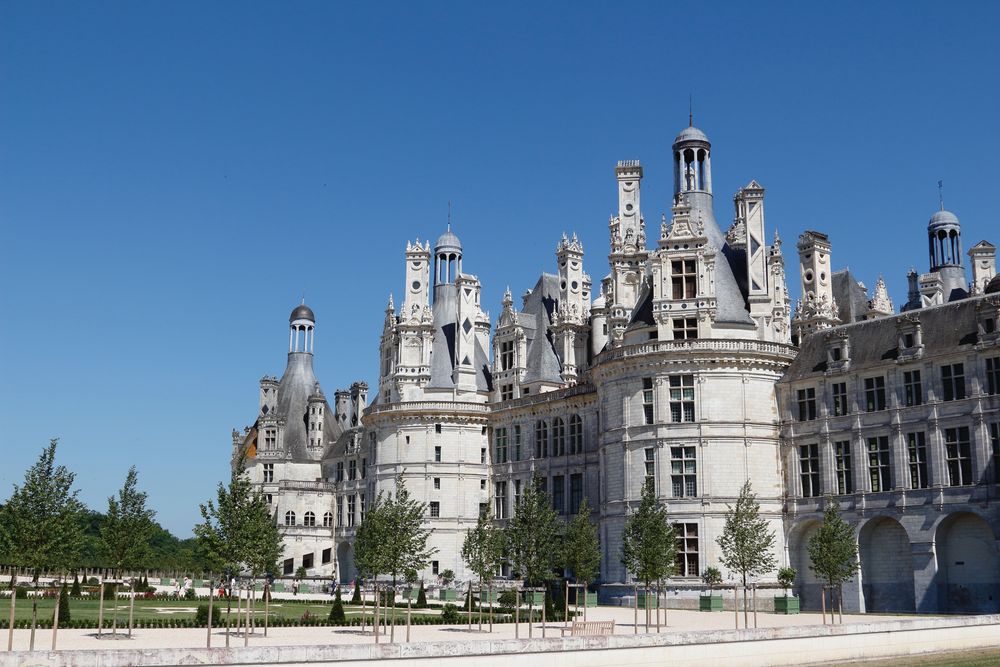
One of France’s most unique castles, Château de Chambord towers above its grounds with domed turrets dispersed throughout. Considered the Mona Lisa of architecture, Château de Chambord has been a marvel since its creation.
In 1512, King François I commissioned the castle’s construction in the Sologne marshlands. This castle was never a permanent residence for François I, but rather a show of his power and ode to Leonardo Da Vinci’s designs.
The castle is built around its central axis and the double helix spiral staircase. This ascends to the upper levels which are decorated with chimneys, terraces, and sculptures. François I never finished construction on the castle, leaving it to Louis XIV who resided for a time in the castle and completed the gardens surrounding the estate.
After the French Revolution, the castle fell into a state of neglect until the Duke of Bordeaux found it and resided there for a time. The castle was passed down to his sons until 1930 when the castle became the property of France.
Thus began work to restore the property to François I’s original Renaissance vision. This included demolishing the attics built by Louis XIV and restoring the interiors. In 1981, the castle was added to the list of UNESCO World Heritage Sites.
Visitors today can explore 60 of the castle’s rooms and wander the formal gardens and adjacent nature preserve. There are tours available and tickets can be purchased online.
Visits are suspended until September 10th, 2021 as the American series, The Serpent Queen is being filmed on the castle grounds.
Château de Vaux-le-Vicomte
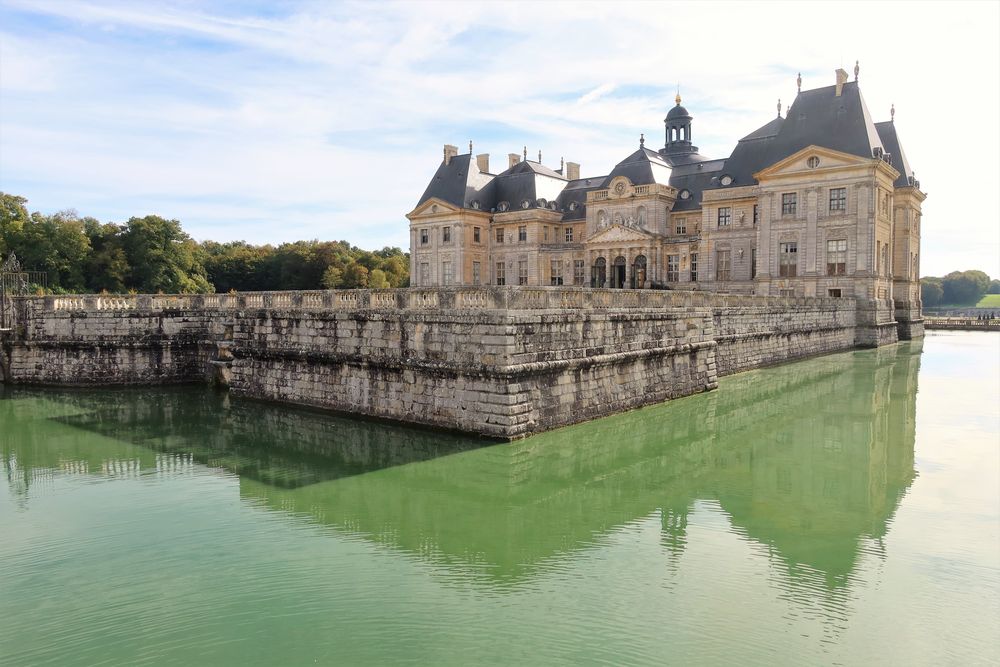
Château de Vaux-le-Vicomte began its succession of successful French aristocrats in 1641 when Nicolas Fouquet purchased the manor and its castle. Under his direction, the castle and grounds were transformed into a vision of luxury and grandeur. Fouquet brought on designers Louis Le Vau, Charles Le Brun, and André Le Notre to complete the project and make the castle and grounds an exhibit of natural harmony.
Unfortunately, in 1661 Fouquet was arrested and the castle and its furnishings, art, and other collections were seized by King Louis XIV. Fouquet’s wife eventually recovered the estate and lived on the property until her death. After this, the estate was sold again to Marshal de Villars.
The de Villars family occupied the estate for a few years, but the estate was sold again in 1764 to Duc de Prasin. A century later the estate was put up for auction and after spending 50 years abandoned and neglected.
Alfred Sommier bought the estate in 1881 and restored the castle to its former glory. His descendants continue this stewardship today maintaining the interiors, exteriors, and gardens.
Visitors today can walk the castle grounds, visit the carriage museum, or enjoy a candlelit dinner in one of the castle’s three fine-dining restaurants. Picnics in the gardens are another popular activity for visitors and tourists.
Reservations are required for candlelit dinners. Visitors can purchase admission to the grounds and reserve their spot for candlelit dinners through the castle’s website.
Château de Fontainebleau
The Château de Fontainebleau is another unique castle in France. Built in 1167, the Château de Fontainebleau predates the Château de Versailles by five centuries. Located on the royal game preserve, the Forest de Fontainebleau, the castle was passed down from king to king during Medieval times until the 19th century. Each year the kings would visit the castle for hunting season.
During these times, each king would commission France’s greatest architects to add new architectural additions. Due to this, the Château de Fontainebleau has become one of the best places to see France’s architecture and design evolve over the centuries. All of the artifacts and architecture have been restored or remain in their original state, allowing visitors to truly see an illustration of France’s cultural evolution.
Château de Fontainebleau also offers visitors a unique trip into Italian Renaissance design and art. After Henri II married Catherine de Medici of the Medici family, the couple commissioned frescos, sculptures, and the Salle de Balle ballroom from Italy’s most prominent painters, sculptors, and architects. The style added by Henri II and Catherine blended traditional French and Italian styles making the castle a unique place to experience both prominent 14th-century styles.
Located in the Loire Valley, Château de Fontainebleau is the less crowded version of the Château de Versailles and makes for a lovely afternoon of culture. Tickets can be reserved in advance online. There are also tickets available on-site at the ticket office.
Château Royal d’Amboise

Though Château d’Amboise is now an image of Renaissance style and French luxury, the castle began as a small manor on a vantage point of the Loire River used since the Neolithic times. Julius Caesar even visited the site and was impressed by the Amboise oppidum, the main settlement located there.
In the 400s the meeting of Clovis occurred and Château d’Amboise housed the Counts of Anjou after the Norman invasions. In 1214, the king of France moved into the castle and the Amboise-Chaumont family became the king’s vassals. This feudal relationship continued until 1431 when Louise of Amboise was condemned for plotting and conspiracy. Though eventually pardoned, the estate was seized by the Crown.
After the estate was seized by the Crown, additional buildings and wings were added as many kings used the castle as an escape to the Loire Valley. Charles VII was born in the castle in 1470.
During Charles VII’s reign and after his marriage to Anne of Brittany, the king decided to transform the castle into a Gothic-style palace. As the palace’s main architect, Charles VII made significant changes to the castle adding towers, ballrooms, a chapel, and calvaries. He also commissioned Flemish sculptors and Italian artisans to work on the palace and its interiors. By the time he was finished, the castle had 220 rooms. The king’s emblems and monogram and Anne of Brittany’s ermine are still visible on the walls of the castle.
François I, the designer of the Château de Chambord, grew up as a student in the Château d’Amboise. He added many of the Renaissance influences the castle exhibits today and often invited Italian artists and architects to the castle, including Leonardo da Vinci. Da Vinci was later buried on the property in the Chapel of Saint-Hubert. At this time the Château d’Amboise was the center of the French Court.
Henri I and Catherine de Medici often spent time at the castle, but after Charles IX and Henri II’s reign, the French kings stopped coming to the castle and it was no longer the center of French culture and courtship.
After this, the castle was used as a guest house for French sovereigns, a prison, a detention center during the French Revolution, and fell into neglect and ruin. Over this time parts of the castle were demolished, ransacked, or replaced.
In 1974, projects began to restore the castle and bring back some of the value it once held.
Visitors today can walk the castle grounds, visit Leonardo Da Vinci’s tomb, and learn of the centuries of history this castle has seen. Tickets can be purchased online on the castle’s website.
Château d’Ussé
Originally built in 1000, the Château d’Usse was first a Medieval stronghold of wood and stone. In the 13th century, Jean V de Bueil, a supporter of Joan of Arc, began construction to beautify the stronghold and turn it into the beautiful piece of architecture we see today.
Over the centuries the castle was passed down between French aristocrats and continually added to. In the 19th century, the Duke of Blacas and his family made residence in the castle. To this day, they still reside in the castle and manage its maintenance and preservation.
The most notorious aspect of the Château d’Usse was its inspiration to Charles Perrault, the author of The Sleeping Beauty. After visiting the castle he declared it a place of fairy tales and wrote his now-famous story.
Visitors can now step into this privately owned, fairytale property. With an admission ticket, visitors can explore 20 rooms of the castle, learn from the traveling exhibitions put up on the estate, and walk the gardens. Tickets can be purchased onsite!
Château de Cheverny
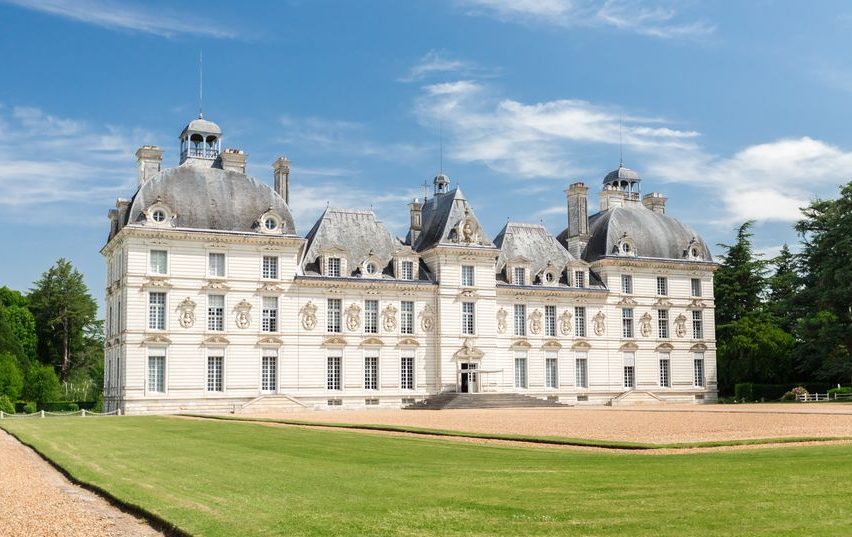
As one of the first private castles to open to the public, a tour of the Château de Cheverny and its grounds is unique. Owned by the Hurault de Vibraye family, the castle has been passed down through generations for six centuries. Originally gifted to the family for their financial services to the kings of France, the castle is a gift that has remained to the present day.
Modeled after the Luxembourg Palace, the castle was occupied for a short time by Henri I’s mistress, Diane de Poitiers, before she was ousted by Henri I’s wife, Catherine de Medici. Both of these women had some influence over the castle’s interiors and its classic French style.
Today, the Hurault de Vibraye family still lives in the right wing of the castle. The owners maintain and care for any restoration or preservation projects on the estate. They opened the castle to the public in 1922 in an effort to share its history and culture with as many people as possible.
The castle also inspired the setting of Herge’s Adventures of TinTin. Due to this the Herge Foundation has set up a permanent exhibit displaying Herge’s Mouslinart and provides an immersive experience into TinTin’s world. TinTin’s pup isn’t the only dog associated with the Château de Cheverny. The kennels house one hundred French tricolor dogs.
Visitors can explore the castle’s public exhibits, wander the estate’s gardens and forest, or visit the kennels. The castle is open most days of the year and tickets can be purchased online.
French Castles
These are the best French castles you must visit.
Château Comtal de Carcassonne

The Château Comtal de Carcassonne is not just known for its citadel, but also for being the largest European city with still intact walls. This Medieval castle has been a stronghold for France for hundreds of years and was even a battleground during the Crusades in 1209.
The castle is made up of single-story buildings and primarily showcases Roman and Gothic styles. Due to the castle’s location in France (the castle was originally in Spain), it has been substantially restored and preserved as a historic monument.
The castle still showcases Medieval defensive strategies with rings of walls containing slits for firing arrows at invaders. Though French royalty never inhabited this castle, its history and close connection to the Crusades make it a historical trip not to miss.
Visitors can access the castle grounds with a ticket admission to the museum. The museum offers historic exhibitions, battle reconstruction, military art, and more about this Medieval stronghold’s history. Tickets to visit can be purchased on site.
Palais des Papes
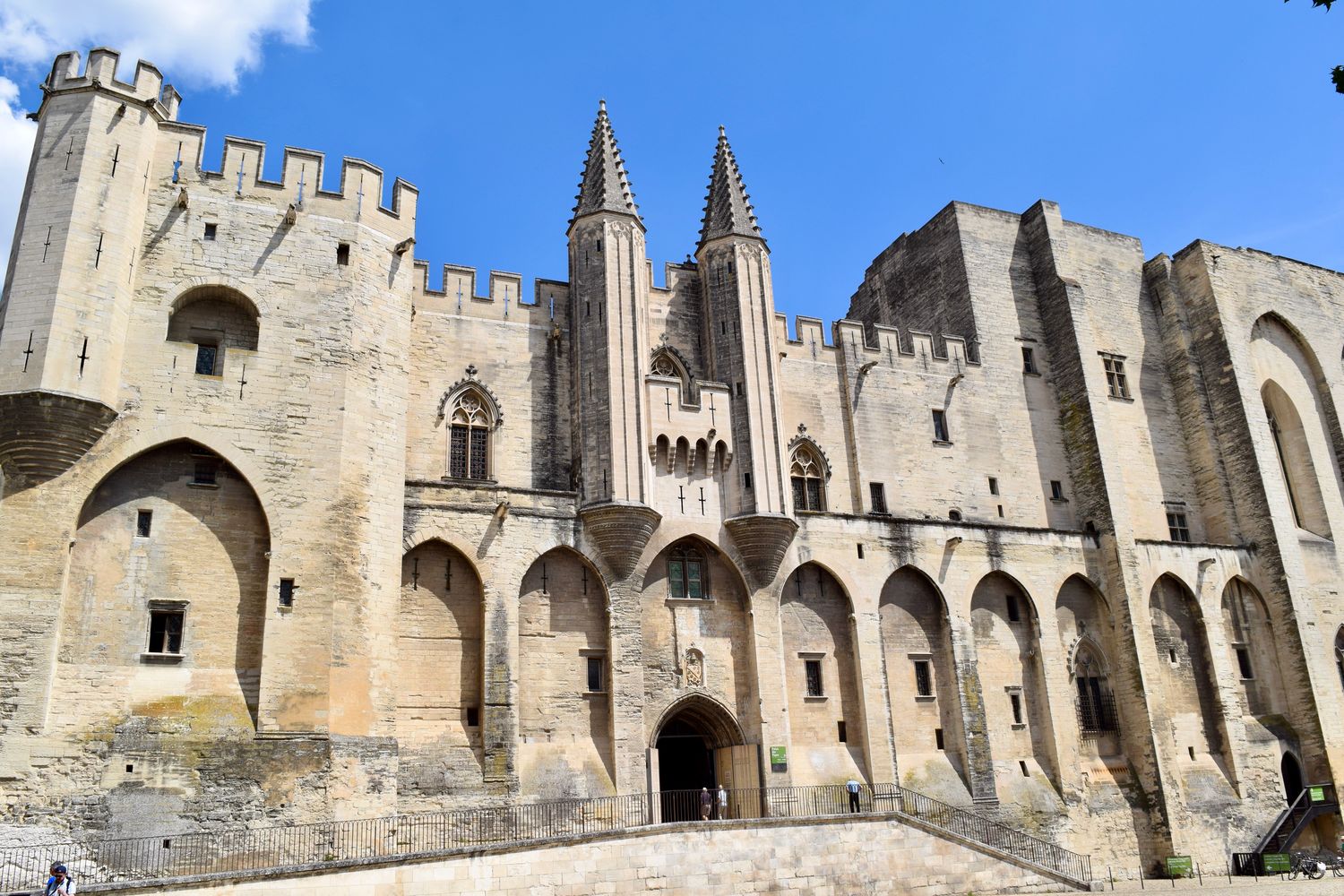
Palais des Papes, or “Palace of Popes,” was designed and built by two popes when Avignon was the center of European catholicism. It is the largest Gothic palace in Europe. The floor space alone takes up the same area as four Gothic cathedrals! Construction started on this castle in 1335 and continued for another 20 years under the direction of Pope Benedict XII and his successor Clement VI.
One of the most remarkable aspects of the Palais des Papes is the preserved frescos decorating the castle’s chapels and papal apartments. These frescoes were painted by a variety of French and Italian artists of the 14th century. The most prominent of these artists was Matteo Giovannetti.
After the French Revolution, the Palais des Papes was used as barracks until the early 1900s when it was opened to the public. Today, you can explore the castle’s interior and learn about its construction on a guided tour. In addition, each summer the Palais des Papes hosts a prominent art exhibit. During July, the palace hosts the Avignon Theatre Festival.
Mont Saint Michel

Mont Saint Michel may be one of France’s most famous sites and certainly one of Normandy’s finest. Perched atop a tidal island, the commune sits above a bay and has served as a pilgrimage destination for many years.
Though not quite a chateau or castle, Mont Saint Michel has the same feeling of magic as the homes of the French aristocracy, however, much of this magic comes from a legend.
In 708, Archangel Michael appeared in a dream to the Bishop of Avranches, St. Aubert. For three nights the archangel visited the bishop with one demand: to build a sanctuary atop Mont Tombe in his honor. Mont Tombe did not seem the ideal place to build a sanctuary as it sat on a rocky island above the sea. St. Aubert resisted and the Archangel burned a hole in the bishop’s forehead. The bishop followed through with the archangel’s demand in 709 when he built a church in his honor atop Mont Tombe.
200 years after the church was built, a monastery and abbey were added to the island along with tall walls that kept the city from the sea. Eventually, kings of France and other dukes contributed funding to the island and developed the commune into a place of learning and a center for pilgrimage. Now, the commune is a UNESCO world heritage site and a hot spot for tourists and locals alike.
Museums, restaurants, and souvenir shops line the cobbled streets of Mont Saint Michel. The abbey offers tours and visitors can explore the mudflats surrounding the island. At high tide, however, the castle is still surrounded by the sea thanks to the restoration and preservation projects happening in Mont Saint Michel Bay.
Visitors do not need tickets to explore Mont Saint Michel. Attractions, such as the abbey, do require ticketed entry, but those tickets can be purchased on-site. Visitors will also need to park on the mainland at Place de Navettes and take a shuttle to the island.
As you can see, there is a wide variety of French castles and chateaux to explore in France. From the Middle Ages to the 19th century, France has so much to offer in terms of stunning architecture!
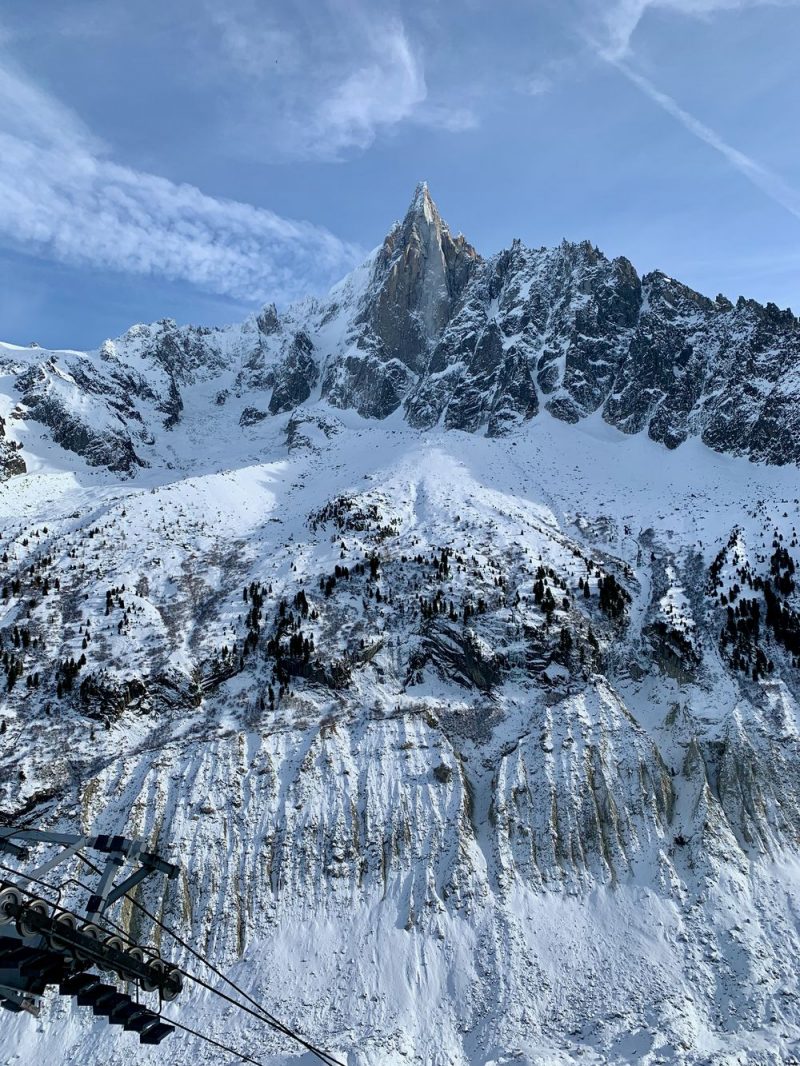
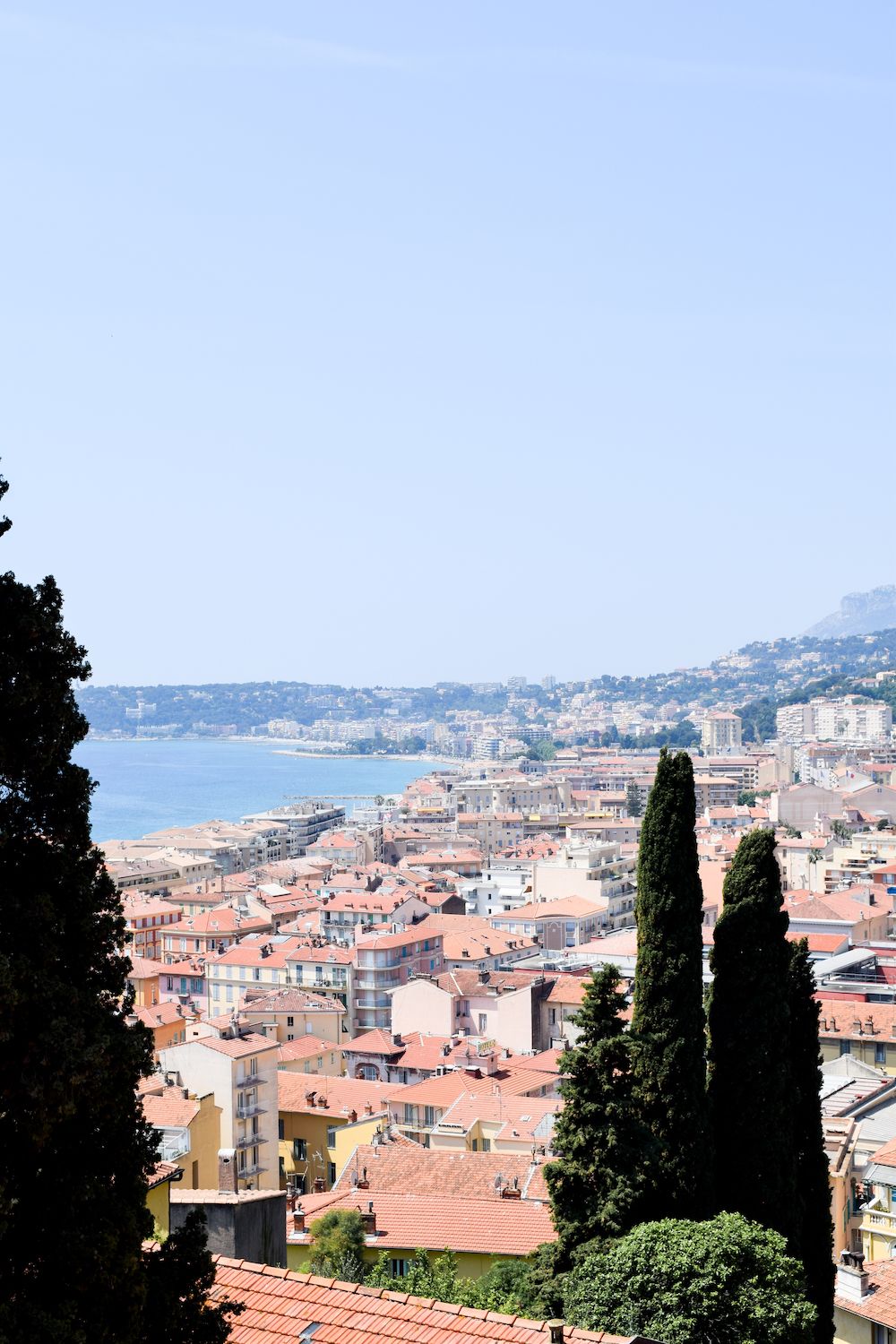
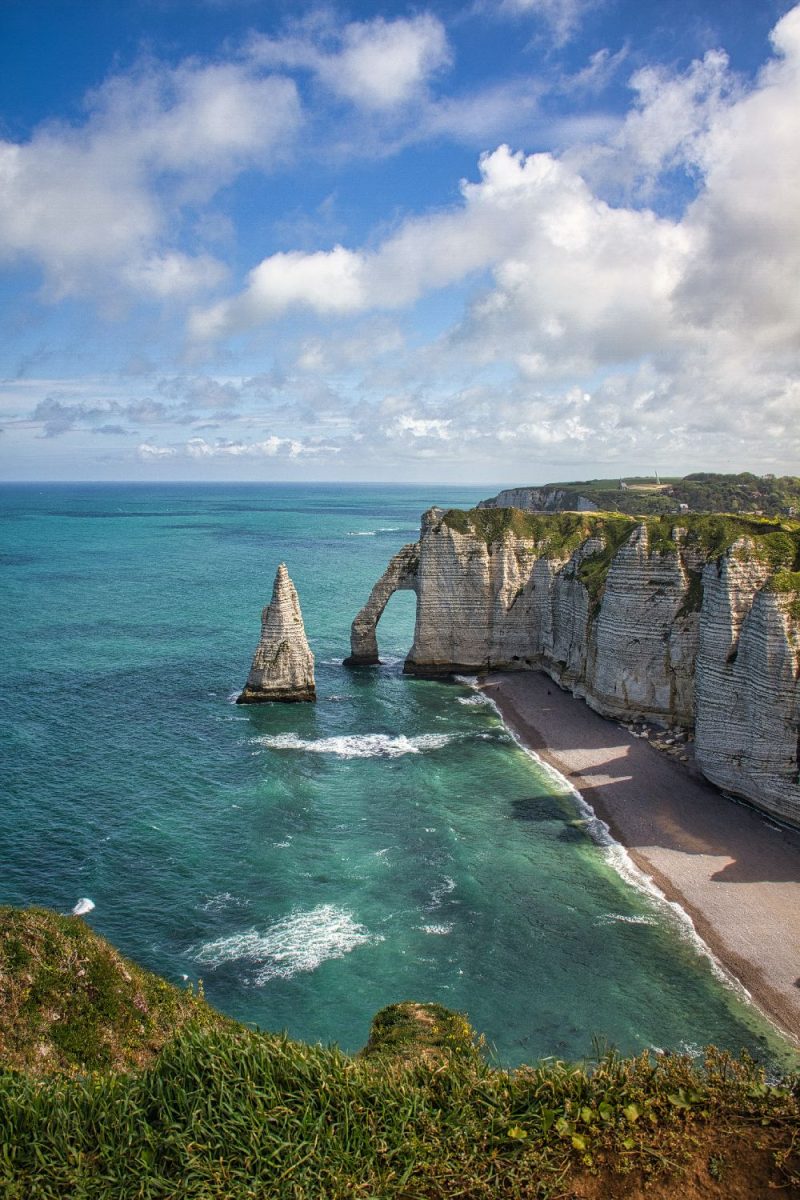
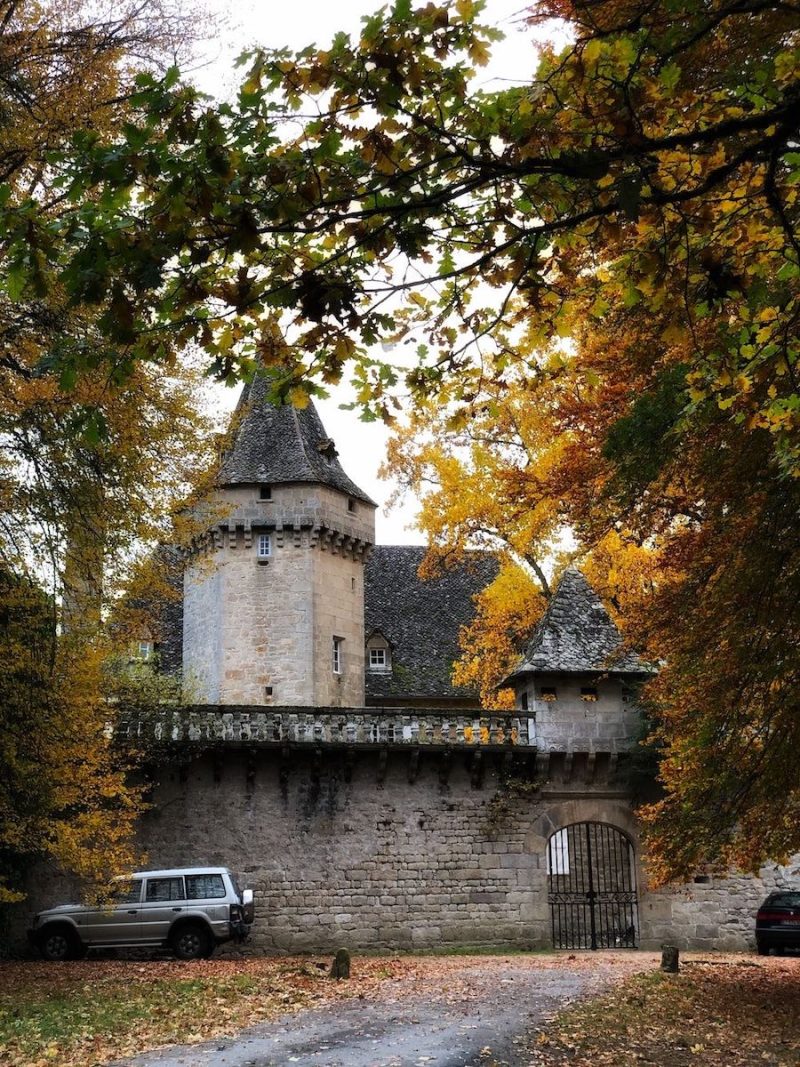
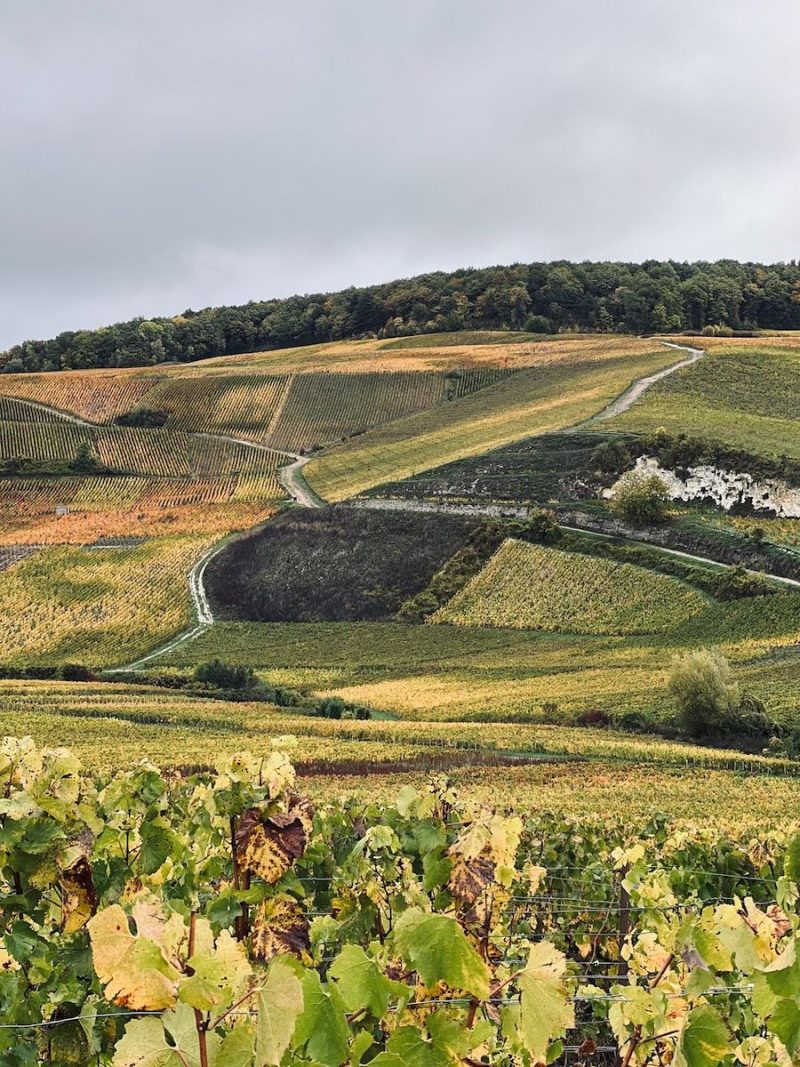

You can add Chateau of Pierrefonds in your list ! One of the most beautiful and tallest chateau in France, with beautiful middle-age architecture, which deserve to be in this ranking.